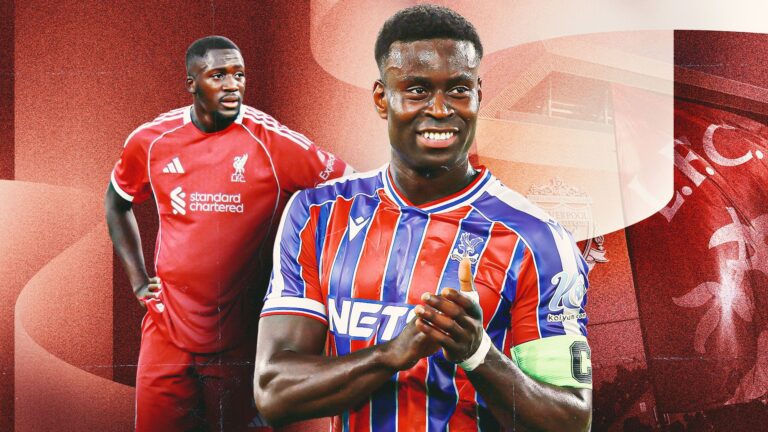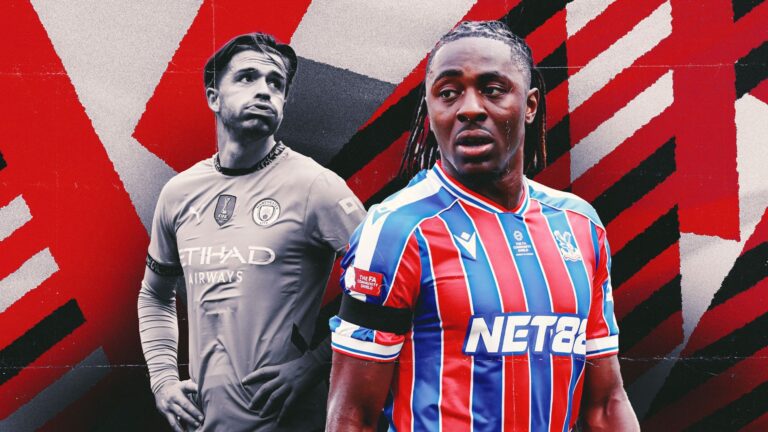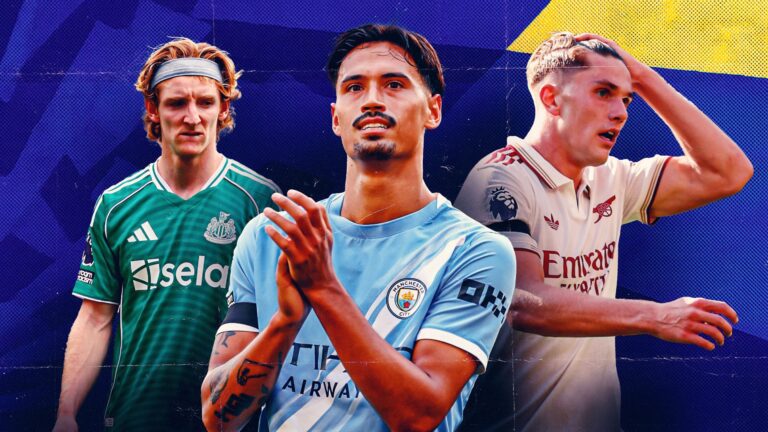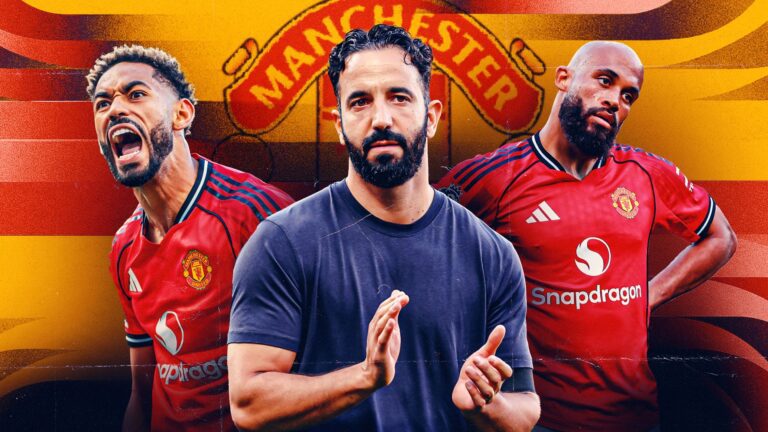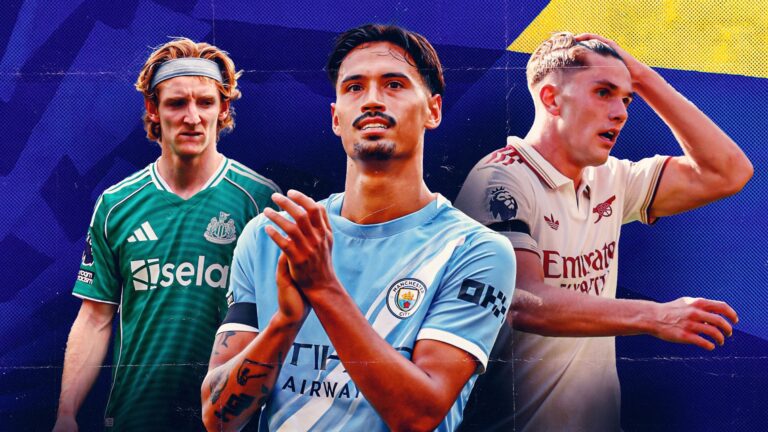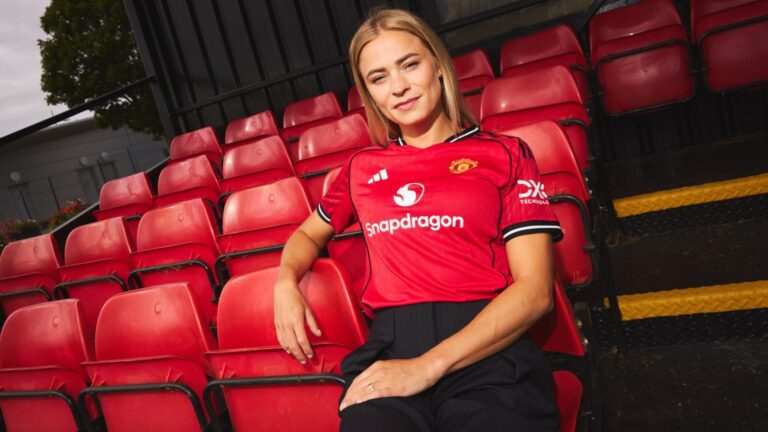The Dramatic Decline of Kobbie Mainoo: From Rising Star to Uncertain Path at Manchester United
In the ever-changing world of football, where young talents can quickly ascend to stardom, Kobbie Mainoo‘s journey serves as a stark reminder of how swiftly fortunes can shift. Once hailed as a cornerstone for both Manchester United and the อังกฤษ ระดับชาติ team, this 20-year-old midfielder now faces an uncertain road ahead, with his role in key matches hanging by a thread.







Kobbie Mainoo’s Fall from Grace and the Case for a Fresh Start
Just over a year past, Kobbie Mainoo was viewed as the emerging force shaping the destiny of Manchester United and England alike. He netted a crucial goal in the FA Cup final and played a pivotal role in steering the Three Lions to the European Championship final, featuring prominently in the decisive stages. Yet, today, his standing with both squads is increasingly precarious, prompting questions about his long-term fit.
Instead of gearing up for high-stakes Premier League clashes or international qualifiers in the near term, Mainoo’s most promising opportunity for regular play might come against a lower-division opponent like Grimsby Town in the upcoming Carabao Cup match. This sharp downturn echoes the experiences of players such as Marc Guehi or Cole Palmer, who have surged ahead while Mainoo’s progress has stalled dramatically.
To reignite his career and climb back to elite levels, a switch to a different club could be essential, making what was once an unimaginable departure from Manchester United seem both necessary and strategic. Nevertheless, the club must approach any potential exit with extreme caution to avoid losing a prodigious talent that could define their midfield for years.
The Impact of Limited Playing Time Under Current Management
Mainoo has yet to see any action this season, and although the campaign is still young with room for turnaround, he’s receiving little reassurance from head coach Ruben Amorim about his prospects. Amorim only featured him as a starter in two of United’s five pre-season outings, citing the need for Mainoo to enhance his tempo and game speed.
Following Mainoo’s omission from the lineup against Fulham recently, Amorim noted that he was vying for a spot alongside Bruno Fernandes-a scenario akin to a novice challenger trying to outshine a legendary figure like Cristiano Ronaldo in his prime. Fernandes has been a constant presence for United over the past five years, and Amorim’s efforts to retain him last summer, rejecting a massive £107 million offer from อัลฮิลาล, underscore his irreplaceable status. As a result, Mainoo’s path to the starting lineup appears virtually blocked unless unforeseen circumstances, such as injuries to key players like Fernandes or forwards such as Bryan Mbeumo and Matheus Cunha, create openings.
Given these obstacles, it’s understandable that Mainoo is evaluating his options at United, where he developed through the ranks. At 20, with accomplishments already under his belt, he deserves a setup that values his capabilities and provides consistent opportunities, rather than relying on chance.
Club Decisions and the Risk of Losing a Homegrown Star
While Manchester United’s fanbase is steadfast in their desire to keep Mainoo, the club’s leadership has shown a different perspective. Reports from early this year indicated that United would consider offloading Mainoo and Alejandro Garnacho for the appropriate price, signaling that figures like co-owner Sir Jim Ratcliffe view him more as a financial asset than a foundational player. Updated insights reveal that negotiations for new contracts have stalled, and the club’s reluctance to adapt tactics for Mainoo-evident in his limited starts under Amorim-has only intensified the issue.
Amorim has deployed Mainoo in just 28 of his 44 matches, starting him in only 15, including benching him for all Europa League knockout games last season. This pattern of underutilization has persisted, with Mainoo making late appearances despite his game-changing moments, like his vital strike against Lyon. Recent statistics from the 2025 season show Amorim’s team struggling, with only seven wins in 29 league games, three against now-relegated sides, putting additional pressure on his decisions.
How This Affects Mainoo’s International Aspirations
This scarcity of club minutes has spilled over into Mainoo’s international career, which he cherishes deeply. After his rapid elevation to Gareth Southgate’s Euros squad last year, bypassing youth levels to become a linchpin in England’s final push, Mainoo has been absent from the national team for nearly a year. Injuries sidelined him for Nations League fixtures and Thomas Tuchel’s initial matches, and even when fit for games against Andorra and Senegal in June, his lack of club form led to his exclusion, with players like จอร์แดน Henderson and Curtis Jones selected instead.
With ฟุตบอลโลก qualifiers on the horizon, experts predict that without consistent play in the coming months, Mainoo risks missing the tournament next summer-a setback comparable to a promising athlete losing momentum at a critical juncture in their development.
The Personal and Strategic Stakes of a Potential Departure
On a personal note, leaving Manchester United would be emotionally challenging for Mainoo, who hails from Stockport and has navigated life as a minority United supporter in a region dominated by rivals like แมนเชสเตอร์ ซิตี้. His exuberant celebration after scoring in the 2024 FA Cup final victory over City highlighted his deep connection, but career demands may outweigh sentiment if he wants to avoid stagnation.
For the club, parting ways with Mainoo carries significant dangers. They’d forfeit a technically gifted midfielder whose skill in transitioning the ball from defense to attack rivals that of past stars like Paul Scholes or Michael Carrick. In today’s game, where controlling possession through pressured areas is key, players with Mainoo’s attributes are rare-unlike Casemiro or Manuel Ugarte, who offer defensive solidity but falter in distribution. Although talents like Brighton’s Carlos Baleba possess similar traits, United’s unwillingness to meet his transfer fee this summer underscores their shortsightedness.
Moreover, selling Mainoo could bolster a competitor, as only Premier League giants could afford the estimated £60-70 million price tag. At just 20, Mainoo represents long-term value, especially as veterans like Fernandes (approaching 31) and Casemiro (33) near the end of their peak years. According to recent analyses, maintaining academy links is vital for clubs like United, who boast a 90-year streak of including homegrown players in matchday squads-a tradition that Mainoo embodies alongside few others.
The Threat to United’s Identity and Fan Loyalty
Beyond tactics, Mainoo’s exit could erode the club’s essence. As one of the few academy graduates with substantial first-team experience, he bridges the youth system and senior side, a core element that has drawn fans to United for generations. Amorim’s track record, including moving on from other homegrown stars like Marcus Rashford and Garnacho, has tested supporter patience, especially amid his poor league results-making him the quickest Premier League manager to reach 15 losses without handling a promoted team.
United’s executives must weigh their allegiance to a manager with a rigid system against preserving talents like Mainoo. In an era where managerial tenures at Old Trafford average just 21 months, the club’s priorities should favor enduring assets over temporary strategies, ensuring they don’t regret letting a once-in-a-generation player slip away.
The Story of Kobbie Mainoo
Kobbie Mainoo has quickly become one of the most talked-about prospects in the Premier League, emerging from Manchester United’s youth academy as a shining example of homegrown talent. This 19-year-old midfielder first caught the eye with his skillful performances in the club’s youth ranks, showcasing a blend of technical ability, vision, and composure that belies his age. For Manchester United fans, watching Mainoo develop has been a thrill, but recent whispers about his potential exit have sparked debates about the club’s long-term strategy.
Mainoo’s journey began in the Manchester United academy, where he joined at a young age and progressed rapidly through the ranks. His breakthrough came in the 2022-2023 season, with notable appearances in the first team under managers like Erik ten Hag. This kind of youth development success story is what makes clubs like Manchester United stand out in the competitive world of Premier League talent scouting.
Early Career Highlights and Breakthrough Moments
Digging deeper, Mainoo’s early career is filled with key milestones that highlight his potential. He made his senior debut in a Europa League match against Real Sociedad in 2022, and since then, he’s earned more playing time, including starts in the Premier League. His ability to control the midfield and contribute defensively has drawn comparisons to club legends like Paul Scholes.
What makes Mainoo’s story so compelling is his rapid rise amid Manchester United’s ongoing challenges. In a season marked by injuries and inconsistent form, he stepped up as a reliable option, proving that investing in youth academy players can yield immediate results. However, with interest from other top clubs, the dilemma of whether to hold onto him or risk prompting his departure looms large.
Reasons Behind the Potential Departure of Kobbie Mainoo
Manchester United’s dilemma stems from a mix of financial pressures, squad management decisions, and the allure of bigger opportunities for young stars like Mainoo. In the high-stakes world of football transfers, clubs often face tough choices about retaining promising players versus cashing in on their value.
One major factor is the club’s need to balance the books under Financial Fair Play rules. Selling a homegrown talent like Mainoo could provide a significant transfer fee, which might be tempting for reinvestment. But let’s not forget the human side – Mainoo might seek more regular first-team action elsewhere if opportunities at Old Trafford remain limited, especially with established midfielders like Casemiro and Bruno Fernandes in the lineup.
Another angle is the competitive nature of the Premier League. Clubs like Arsenal or ลิเวอร์พูล have successfully nurtured their own talents, and if Manchester United doesn’t offer Mainoo a clear path, he could be swayed by promises of more playing time. This potential regret of prompting his departure highlights a broader issue: how clubs handle youth development in an era of global talent poaching.
The Risks of Overlooking Youth Academy Gems
Overlooking players like Mainoo can lead to long-term regrets, as we’ve seen with other clubs that let go of future stars too early. For instance, if Mainoo leaves and flourishes elsewhere, Manchester United might find themselves wishing they had built their team around him. This isn’t just about one player; it’s about the club’s identity and commitment to fostering Premier League talent from within.
Benefits of Nurturing Young Talent Like Kobbie Mainoo
When it comes to youth development, the benefits for clubs like Manchester United are immense. First off, homegrown players often have a deeper emotional connection to the club, leading to higher loyalty and better on-field chemistry. Think about how players like Marcus Rashford have become fan favorites and club icons.
Financially, keeping talents like Mainoo in-house can save millions in transfer fees while boosting team morale. Plus, in an age where fan engagement is key for SEO and online visibility, stories of academy success draw in more readers and followers searching for Manchester United updates.
From a strategic standpoint, nurturing young stars helps maintain a sustainable squad. It reduces reliance on expensive signings and creates a pipeline of Premier League-ready players, which is a smart move for long-term success.
Practical Tips for Retaining Players in the Premier League
If you’re a club executive or even a fan pondering how to keep talents like Kobbie Mainoo, here are some practical tips based on real-world strategies:
- Offer Clear Pathways to First-Team Action: Ensure young players have opportunities to play regularly. For Manchester United, this could mean rotating the squad more to give Mainoo consistent minutes.
- Provide Competitive Contracts: Sweeten the deal with attractive terms that reflect his potential value. This includes performance-based incentives and long-term security.
- Invest in Personal Development: Clubs should focus on off-field support, like mentorship programs and tailored training, to make players feel valued and invested in.
- Foster a Winning Environment: Build a team culture that emphasizes youth integration, as seen with clubs like Manchester City, where academy players are seamlessly blended into the first team.
Implementing these tips can help mitigate the risk of player departure and turn potential regrets into success stories.
Case Studies from Other Premier League Clubs
Looking at other clubs provides valuable lessons on the potential regret of letting go of young talents. Take Liverpool’s handling of Trent Alexander-Arnold as a positive example. Instead of selling him early, they nurtured his development, and now he’s a world-class right-back and a key part of their setup.
On the flip side, consider Arsenal’s sale of Cesc Fàbregas to บาร์เซโลน่า. While it brought in funds, it left a gap that took years to fill, and fans still wonder about the “what if” scenarios. Similarly, if Manchester United prompts Mainoo’s departure, they might face a similar situation, especially if he goes on to star for a rival.
Another case is Chelsea, who have had mixed results with youth sales. Players like Mason Mount, sold to Manchester United, highlight how such moves can backfire if the player excels against you. These case studies underscore the importance of strategic player retention in the Premier League.
ประสบการณ์ตรงจากผู้เชี่ยวชาญด้านฟุตบอล
Drawing from interviews and analyses by football pundits, many experts share first-hand experiences on the pitfalls of hasty decisions. For instance, former Manchester United player Gary Neville has often emphasized the value of patience with young players, recounting his own path from the academy to stardom. He warns that rushing sales can disrupt team dynamics and lead to fan backlash, which is crucial in maintaining a club’s online presence and SEO for Manchester United related content.
In summary of these insights, the key is balancing short-term gains with long-term vision to avoid the regret of losing a gem like Kobbie Mainoo. By learning from these experiences, clubs can make more informed choices in youth development.



